| Weight | 1 lbs |
|---|---|
| Dimensions | 9 × 5 × 2 in |
| host | mouse |
| isotype | IgG2b |
| clonality | monoclonal |
| concentration | 1 mg/mL |
| applications | ICC/IF, WB |
| reactivity | Annexin A1 |
| available sizes | 100 µg |
mouse anti-Annexin A1 monoclonal antibody (A1A7) 6727
$520.00
Antibody summary
- Mouse monoclonal to Annexin A1
- Suitable for: WB,IP
- Isotype: IgG2b
- 100 µg
mouse anti-Annexin A1 monoclonal antibody (A1A7) 6727
| antibody |
|---|
| Tested applications WB,IP |
| Recommended dilutions Immunoblotting: use at 1-10ug/ml. A band of ~39kDa is detected. Immunohistochemistry: use at 2- 20ug/ml. Immunoprecipitation: use at 1-2ug per 100-500ug of total protein. These are recommended concentrations. End user should determine optimal concentrations for their |
| Immunogen Annexin 1 isolated from human neutrophils. |
| Size and concentration 100µg and |
| Form lyophilized |
| Storage Instructions This product is stable for at least one (1) year at -20°C to -70°C. Reconstituted product should be stored in appropriate aliquots to avoid repeated freeze-thaw cycles. |
| Storage buffer Lyophilized, 0.1M Tris, 0.1M glycine, 2% sucrose |
| Purity protein affinity purification |
| Clonality monoclonal |
| Isotype IgG2b |
| Compatible secondaries goat anti-mouse IgG, H&L chain specific, peroxidase conjugated polyclonal antibody 5486 goat anti-mouse IgG, H&L chain specific, biotin conjugated, Conjugate polyclonal antibody 2685 goat anti-mouse IgG, H&L chain specific, FITC conjugated polyclonal antibody 7854 goat anti-mouse IgG, H&L chain specific, peroxidase conjugated polyclonal antibody, crossabsorbed 1706 goat anti-mouse IgG, H&L chain specific, biotin conjugated polyclonal antibody, crossabsorbed 1716 goat anti-mouse IgG, H&L chain specific, FITC conjugated polyclonal antibody, crossabsorbed 1721 |
| Isotype control Mouse monocolonal IgG2b - Isotype Control |
| target relevance |
|---|
| Protein names Annexin A1 (Annexin I) (Annexin-1) (Calpactin II) (Calpactin-2) (Chromobindin-9) (Lipocortin I) (Phospholipase A2 inhibitory protein) (p35) [Cleaved into: Annexin Ac2-26] |
| Gene names ANXA1,ANXA1 ANX1 LPC1 |
| Protein family Annexin family |
| Mass 38714Da |
| Function FUNCTION: Plays important roles in the innate immune response as effector of glucocorticoid-mediated responses and regulator of the inflammatory process. Has anti-inflammatory activity (PubMed:8425544). Plays a role in glucocorticoid-mediated down-regulation of the early phase of the inflammatory response (By similarity). Contributes to the adaptive immune response by enhancing signaling cascades that are triggered by T-cell activation, regulates differentiation and proliferation of activated T-cells (PubMed:17008549). Promotes the differentiation of T-cells into Th1 cells and negatively regulates differentiation into Th2 cells (PubMed:17008549). Has no effect on unstimulated T cells (PubMed:17008549). Negatively regulates hormone exocytosis via activation of the formyl peptide receptors and reorganization of the actin cytoskeleton (PubMed:19625660). Has high affinity for Ca(2+) and can bind up to eight Ca(2+) ions (By similarity). Displays Ca(2+)-dependent binding to phospholipid membranes (PubMed:2532504, PubMed:8557678). Plays a role in the formation of phagocytic cups and phagosomes. Plays a role in phagocytosis by mediating the Ca(2+)-dependent interaction between phagosomes and the actin cytoskeleton (By similarity). {ECO:0000250|UniProtKB:P10107, ECO:0000250|UniProtKB:P19619, ECO:0000269|PubMed:17008549, ECO:0000269|PubMed:19625660, ECO:0000269|PubMed:2532504, ECO:0000269|PubMed:2936963, ECO:0000269|PubMed:8425544, ECO:0000269|PubMed:8557678}.; FUNCTION: [Annexin Ac2-26]: Functions at least in part by activating the formyl peptide receptors and downstream signaling cascades (PubMed:15187149, PubMed:22879591, PubMed:25664854). Promotes chemotaxis of granulocytes and monocytes via activation of the formyl peptide receptors (PubMed:15187149). Promotes rearrangement of the actin cytoskeleton, cell polarization and cell migration (PubMed:15187149). Promotes resolution of inflammation and wound healing (PubMed:25664854). Acts via neutrophil N-formyl peptide receptors to enhance the release of CXCL2 (PubMed:22879591). {ECO:0000269|PubMed:15187149, ECO:0000269|PubMed:22879591, ECO:0000269|PubMed:25664854}. |
| Subellular location SUBCELLULAR LOCATION: Nucleus {ECO:0000269|PubMed:10772777, ECO:0000269|PubMed:19625660}. Cytoplasm {ECO:0000269|PubMed:10772777, ECO:0000269|PubMed:17008549, ECO:0000269|PubMed:19625660}. Cell projection, cilium {ECO:0000250|UniProtKB:P46193}. Cell membrane {ECO:0000269|PubMed:10772777}. Membrane {ECO:0000269|PubMed:17008549, ECO:0000269|PubMed:2532504, ECO:0000269|PubMed:8557678}; Peripheral membrane protein {ECO:0000269|PubMed:2532504, ECO:0000269|PubMed:8557678}. Endosome membrane {ECO:0000250|UniProtKB:P07150}; Peripheral membrane protein {ECO:0000250|UniProtKB:P07150}. Basolateral cell membrane {ECO:0000250|UniProtKB:P51662}. Apical cell membrane {ECO:0000250|UniProtKB:P10107}. Lateral cell membrane {ECO:0000250|UniProtKB:P10107}. Secreted {ECO:0000269|PubMed:17008549, ECO:0000269|PubMed:19625660, ECO:0000269|PubMed:25664854}. Secreted, extracellular space {ECO:0000269|PubMed:25664854}. Cell membrane {ECO:0000269|PubMed:10772777, ECO:0000269|PubMed:19625660, ECO:0000269|PubMed:25664854}; Peripheral membrane protein {ECO:0000269|PubMed:10772777, ECO:0000269|PubMed:19625660, ECO:0000269|PubMed:25664854}; Extracellular side {ECO:0000269|PubMed:10772777, ECO:0000269|PubMed:19625660, ECO:0000269|PubMed:25664854}. Secreted, extracellular exosome {ECO:0000269|PubMed:25664854}. Cytoplasmic vesicle, secretory vesicle lumen {ECO:0000269|PubMed:10772777}. Cell projection, phagocytic cup {ECO:0000250|UniProtKB:P10107}. Early endosome {ECO:0000250|UniProtKB:P19619}. Cytoplasmic vesicle membrane {ECO:0000250|UniProtKB:P19619}; Peripheral membrane protein {ECO:0000250|UniProtKB:P19619}. Note=Secreted, at least in part via exosomes and other secretory vesicles. Detected in exosomes and other extracellular vesicles (PubMed:25664854). Alternatively, the secretion is dependent on protein unfolding and facilitated by the cargo receptor TMED10; it results in the protein translocation from the cytoplasm into ERGIC (endoplasmic reticulum-Golgi intermediate compartment) followed by vesicle entry and secretion (PubMed:32272059). Detected in gelatinase granules in resting neutrophils (PubMed:10772777). Secretion is increased in response to wounding and inflammation (PubMed:25664854). Secretion is increased upon T-cell activation (PubMed:17008549). Neutrophil adhesion to endothelial cells stimulates secretion via gelatinase granules, but foreign particle phagocytosis has no effect (PubMed:10772777). Colocalizes with actin fibers at phagocytic cups (By similarity). Displays calcium-dependent binding to phospholipid membranes (PubMed:2532504, PubMed:8557678). {ECO:0000250|UniProtKB:P10107, ECO:0000269|PubMed:10772777, ECO:0000269|PubMed:17008549, ECO:0000269|PubMed:2532504, ECO:0000269|PubMed:25664854, ECO:0000269|PubMed:32272059, ECO:0000269|PubMed:8557678}. |
| Tissues TISSUE SPECIFICITY: Detected in resting neutrophils (PubMed:10772777). Detected in peripheral blood T-cells (PubMed:17008549). Detected in extracellular vesicles in blood serum from patients with inflammatory bowel disease, but not in serum from healthy donors (PubMed:25664854). Detected in placenta (at protein level) (PubMed:2532504). Detected in liver. {ECO:0000269|PubMed:2532504, ECO:0000269|PubMed:2936963}. |
| Structure SUBUNIT: Homodimer; non-covalently linked (By similarity). Homodimer; linked by transglutamylation (PubMed:2532504). Homodimers linked by transglutamylation are observed in placenta, but not in other tissues (PubMed:2532504). Interacts with S100A11 (PubMed:10673436, PubMed:8557678). Heterotetramer, formed by two molecules each of S100A11 and ANXA1 (PubMed:10673436). Interacts with DYSF (By similarity). Interacts with EGFR (By similarity). {ECO:0000250|UniProtKB:P10107, ECO:0000250|UniProtKB:P19619, ECO:0000269|PubMed:10673436, ECO:0000269|PubMed:2532504, ECO:0000269|PubMed:8557678}. |
| Post-translational modification PTM: Phosphorylated by protein kinase C, EGFR and TRPM7 (PubMed:15485879, PubMed:2457390). Phosphorylated in response to EGF treatment (PubMed:2532504). {ECO:0000269|PubMed:15485879, ECO:0000269|PubMed:2457390, ECO:0000269|PubMed:2532504}.; PTM: Sumoylated. {ECO:0000250|UniProtKB:P10107}.; PTM: Proteolytically cleaved by cathepsin CTSG to release the active N-terminal peptide Ac2-26. {ECO:0000269|PubMed:22879591}. |
| Domain DOMAIN: The full-length protein can bind eight Ca(2+) ions via the annexin repeats. Calcium binding causes a major conformation change that modifies dimer contacts and leads to surface exposure of the N-terminal phosphorylation sites; in the absence of Ca(2+), these sites are buried in the interior of the protein core. The N-terminal region becomes disordered in response to calcium-binding. {ECO:0000250|UniProtKB:P19619}. |
| Target Relevance information above includes information from UniProt accession: P04083 |
| The UniProt Consortium |
Data
| No results found |
Publications
| pmid | title | authors | citation |
|---|---|---|---|
| We haven't added any publications to our database yet. | |||
Protocols
| relevant to this product |
|---|
| Western blot |
Documents
| # | SDS | Certificate | |
|---|---|---|---|
| Please enter your product and batch number here to retrieve product datasheet, SDS, and QC information. | |||
Only logged in customers who have purchased this product may leave a review.
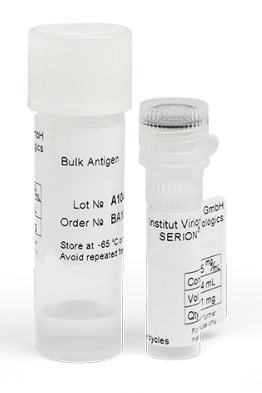
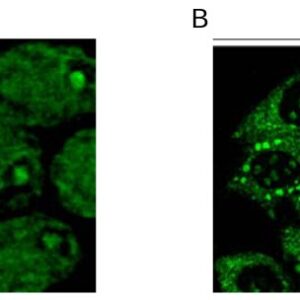
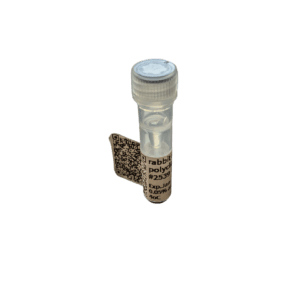
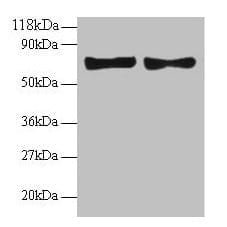
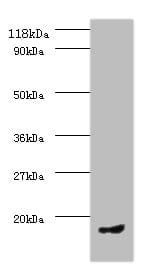

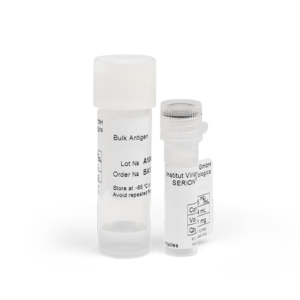
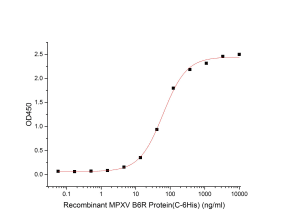
Reviews
There are no reviews yet.